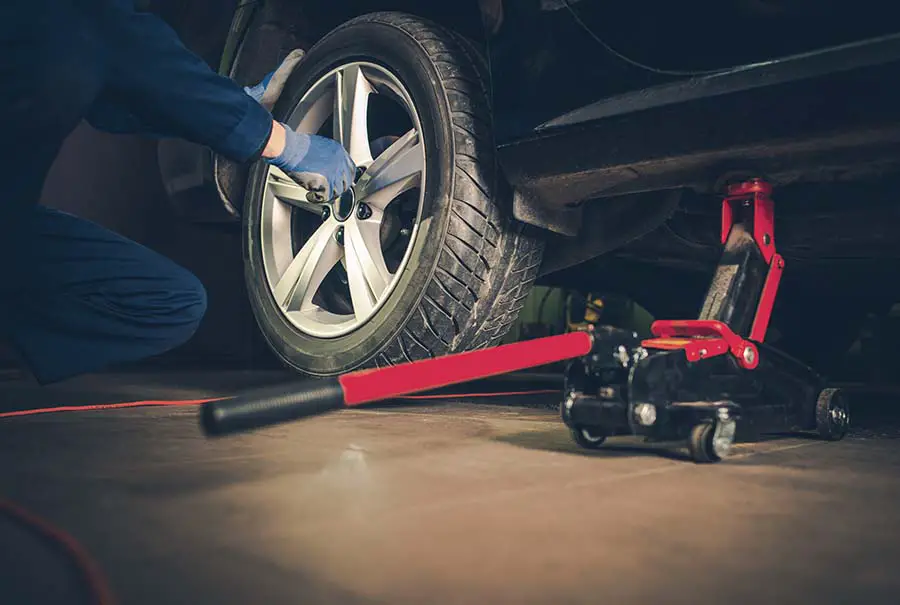How Long Does It Take For A Tire Rotation

Rotating your tires is a crucial part of vehicle maintenance, ensuring even wear and extending the life of your tires. But exactly how long does a tire rotation take? The answer, as with many automotive questions, depends on several factors.
Typical Timeframe for Tire Rotation
In most cases, a professional tire rotation at a reputable shop should take between 15 to 30 minutes. This includes the time to lift the vehicle, remove and reinstall the wheels, and torque the lug nuts to the manufacturer's specified settings. It's a relatively quick service, making it easy to bundle with other routine maintenance tasks.
Factors Affecting Tire Rotation Time
Several factors can influence the duration of a tire rotation service:
- Shop Efficiency: A well-organized shop with experienced technicians will naturally complete the service faster. Shops with multiple bays and dedicated tire equipment can handle rotations more efficiently.
- Vehicle Type: Larger vehicles, such as trucks and SUVs, may require more time due to larger tires and potentially more complex lug nut patterns. Some dually trucks require a more specialized rotation pattern which will extend the time required.
- Wheel Condition: If your wheels are rusted, seized, or have damaged lug nuts, the process will inevitably take longer. Technicians might need to use penetrating oil or specialized tools to remove stubborn wheels.
- Tire Rotation Pattern: Different vehicles and tire types require specific tire rotation patterns. Common patterns include front-to-back, X-pattern, and side-to-side. Using the incorrect pattern can lead to uneven wear and reduced tire life. The chosen pattern will impact the precise steps and, therefore, the time taken.
- Additional Services: If you're combining the tire rotation with other services, such as a brake inspection or wheel balancing, the overall time will increase. Many shops recommend a wheel alignment after a tire rotation to further optimize tire wear, but this adds significantly to the service duration.
DIY Tire Rotation: A Time Investment
While a professional can complete a tire rotation quickly, performing the service yourself will likely take considerably longer. A DIY tire rotation can take anywhere from 45 minutes to over an hour, especially if you're unfamiliar with the process or lack the proper tools.
Essential tools for a DIY tire rotation include:
- Jack and Jack Stands: A quality jack and sturdy jack stands are crucial for safely lifting and supporting the vehicle.
- Lug Wrench: A properly sized lug wrench is essential for loosening and tightening lug nuts. A torque wrench ensures proper tightening to the manufacturer's specifications.
- Wheel Chocks: Wheel chocks prevent the vehicle from rolling while it's lifted.
- Gloves and Safety Glasses: Protect your hands and eyes from dirt and debris.
The DIY route can save you money, but it requires careful attention to safety and proper technique. Refer to your vehicle's owner's manual for the recommended tire rotation pattern and torque specifications. Failure to properly torque the lug nuts can lead to wheel damage or even wheel separation while driving.
The Importance of Regular Tire Rotation
Regardless of whether you choose a professional service or DIY, regular tire rotation is vital for several reasons:
- Extended Tire Life: Evenly distributing wear across all tires maximizes their lifespan.
- Improved Handling: Balanced tire wear contributes to predictable and stable handling.
- Enhanced Safety: Worn tires can compromise braking performance and increase the risk of hydroplaning.
- Cost Savings: By extending tire life, you'll save money on replacement tires in the long run.
Most manufacturers recommend rotating tires every 5,000 to 7,000 miles. Consult your vehicle's owner's manual for the specific recommendation for your vehicle and tire type. Consider the cost of tire rotation versus the cost of prematurely replacing tires. In the long run, regular maintenance is always the more economical choice.
Conclusion
A tire rotation is a quick and cost-effective maintenance procedure that significantly impacts tire life and vehicle safety. Whether you opt for a professional service or tackle it yourself, understanding the process and adhering to recommended maintenance intervals is key to keeping your vehicle running smoothly and safely.
